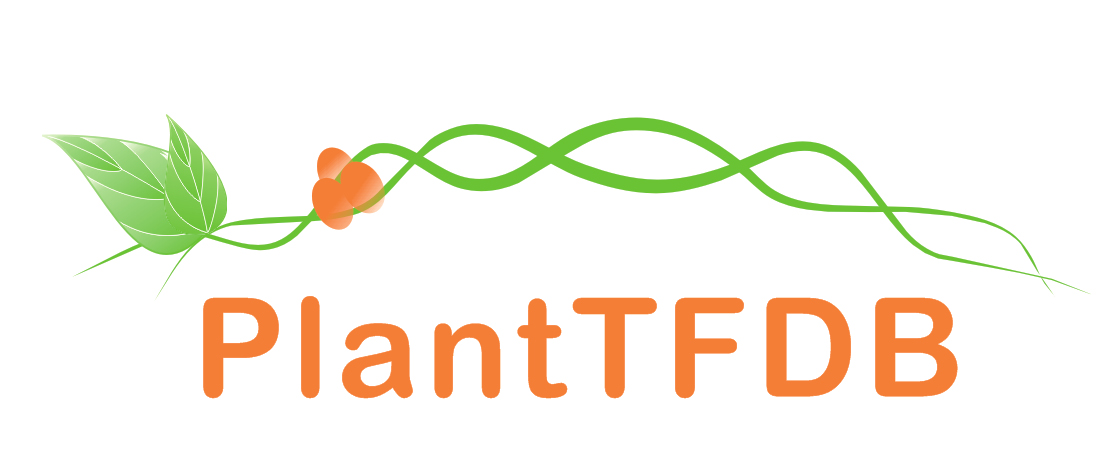 |
PlantRegMap/PlantTFDB v5.0
Plant Transcription
Factor Database
|
| Home TFext BLAST Prediction Download Help About Links PlantRegMap |
Transcription Factor Information
| Basic Information? help Back to Top | |||||||||
|---|---|---|---|---|---|---|---|---|---|
| TF ID | Rsa1.0_03129.1_g00002.1 | ||||||||
| Organism | |||||||||
| Taxonomic ID | |||||||||
| Taxonomic Lineage |
cellular organisms; Eukaryota; Viridiplantae; Streptophyta; Streptophytina; Embryophyta; Tracheophyta; Euphyllophyta; Spermatophyta; Magnoliophyta; Mesangiospermae; eudicotyledons; Gunneridae; Pentapetalae; rosids; malvids; Brassicales; Brassicaceae; Brassiceae; Raphanus
|
||||||||
| Family | bHLH | ||||||||
| Protein Properties | Length: 605aa MW: 67728.2 Da PI: 5.4425 | ||||||||
| Description | bHLH family protein | ||||||||
| Gene Model |
|
||||||||
| Signature Domain? help Back to Top | |||||||
|---|---|---|---|---|---|---|---|
| No. | Domain | Score | E-value | Start | End | HMM Start | HMM End |
| 1 | HLH | 45.6 | 1.3e-14 | 412 | 459 | 3 | 55 |
HHHHHHHHHHHHHHHHHHHHHHCTSCC.C...TTS-STCHHHHHHHHHHHHHHH CS
HLH 3 rahnerErrRRdriNsafeeLrellPk.askapskKlsKaeiLekAveYIksLq 55
++h Er+RR+++N++f +Lr+++P+ + K +K++iL ++eY+++Lq
Rsa1.0_03129.1_g00002.1 412 ANHALSERKRREKLNDRFITLRSMIPSiS------KTDKVSILDDTIEYLQELQ 459
58999**********************66......******************9 PP
| |||||||
| Protein Features ? help Back to Top | ||||||
|---|---|---|---|---|---|---|
| Database | Entry ID | E-value | Start | End | InterPro ID | Description |
| Pfam | PF14215 | 3.2E-52 | 13 | 202 | IPR025610 | Transcription factor MYC/MYB N-terminal |
| PROSITE profile | PS50888 | 17.358 | 409 | 458 | IPR011598 | Myc-type, basic helix-loop-helix (bHLH) domain |
| SuperFamily | SSF47459 | 7.07E-19 | 411 | 477 | IPR011598 | Myc-type, basic helix-loop-helix (bHLH) domain |
| Pfam | PF00010 | 4.0E-12 | 412 | 459 | IPR011598 | Myc-type, basic helix-loop-helix (bHLH) domain |
| Gene3D | G3DSA:4.10.280.10 | 4.8E-18 | 413 | 471 | IPR011598 | Myc-type, basic helix-loop-helix (bHLH) domain |
| CDD | cd00083 | 1.52E-15 | 413 | 463 | No hit | No description |
| SMART | SM00353 | 8.2E-18 | 415 | 464 | IPR011598 | Myc-type, basic helix-loop-helix (bHLH) domain |
| Gene Ontology ? help Back to Top | ||||||
|---|---|---|---|---|---|---|
| GO Term | GO Category | GO Description | ||||
| GO:0009957 | Biological Process | epidermal cell fate specification | ||||
| GO:0005634 | Cellular Component | nucleus | ||||
| GO:0046983 | Molecular Function | protein dimerization activity | ||||
| Sequence ? help Back to Top |
|---|
| Protein Sequence Length: 605 aa Download sequence Send to blast |
MATVENRMMP ENLKKHLAVS VRNIQWSYGI FWSVSASQPG LLEWGDGYYN GDIKTRKTVQ 60 ASEVKADQLG LERSEQLREL YESLSLAESS TSCGSQVNRR ASASSLSPED LTDTEWYYLV 120 CMSFVFNIGE GVPGGVLANG QPIWLCNAHT ADSKVFTRSL LAKSASLLTV VCFPFLGGVL 180 EIGTTEHVAE NLNVIQCVKT LFLEAPHGTL STRSDYQEIF DPLSHDKYIP VFGTEAFPTT 240 STSVYELEPD DHDSFINGGG ASQVQSWQFV GEELSNCVHQ PLNSSDCVSQ TFVGTTGRVT 300 CGPRKSRNQR LDQIQEQNNR VNMDDDVHYQ GVISTIFKTT HQLVLGPQFQ NFDKRSSFTR 360 WRRSSLSAKT LGEKSQNMLK KIISEVPRMH QKKALLPDTP EDSGFKVGDE TANHALSERK 420 RREKLNDRFI TLRSMIPSIS KTDKVSILDD TIEYLQELQR RVQELESCRE SDGKEMRMAM 480 KRKKMEDEDE RVSANCLKSK RKESESDVNV EEDEPADTGY AGLTDNLRIG SFGNEVVIEL 540 RCAWREGILL EIMDVISDLN LDSHSVQSST GDGLLCLTVN CKHKGTKIAT TGVIQNALQR 600 VAWIC |
| 3D Structure ? help Back to Top | ||||||
|---|---|---|---|---|---|---|
| PDB ID | Evalue | Query Start | Query End | Hit Start | Hit End | Description |
| 4rqw_A | 2e-14 | 26 | 202 | 24 | 192 | Transcription factor MYC3 |
| 4rqw_B | 2e-14 | 26 | 202 | 24 | 192 | Transcription factor MYC3 |
| 4rs9_A | 2e-14 | 26 | 202 | 24 | 192 | Transcription factor MYC3 |
| 4yz6_A | 2e-14 | 26 | 202 | 24 | 192 | Transcription factor MYC3 |
| Search in ModeBase | ||||||
| Nucleic Localization Signal ? help Back to Top | |||
|---|---|---|---|
| No. | Start | End | Sequence |
| 1 | 417 | 422 | ERKRRE |
| 2 | 418 | 423 | RKRREK |
| Functional Description ? help Back to Top | ||||||
|---|---|---|---|---|---|---|
| Source | Description | |||||
| UniProt | Transcription activator, when associated with MYB75/PAP1, MYB90/PAP2 or TT2. Involved in epidermal cell fate specification. Regulates negatively stomata formation but promotes trichome formation. Together with MYB66/WER, promotes the formation of non-hair cells in root epidermis cells in the N position. Whereas together with CPC, promotes the formation of hair cells in root epidermis cells in the H position by inhibiting non-hair cell formation. Seems also to play a role in the activation of anthocyanin biosynthesis, probably together with MYB75/PAP1. Involved in seed mucilage production. Activates the transcription of GL2. {ECO:0000269|PubMed:12917293, ECO:0000269|PubMed:12956536, ECO:0000269|PubMed:14627722, ECO:0000269|PubMed:15361138, ECO:0000269|PubMed:15590742}. | |||||
| Cis-element ? help Back to Top | |
|---|---|
| Source | Link |
| PlantRegMap | Rsa1.0_03129.1_g00002.1 |
| Regulation -- Description ? help Back to Top | ||||||
|---|---|---|---|---|---|---|
| Source | Description | |||||
| UniProt | INDUCTION: By UV treatment. Negatively regulated by MYB66/WER, GL3 and BHLH2 in the developing non-hair cells, and positively regulated by CPC and TRY in the developing hair cells. {ECO:0000269|PubMed:12679534, ECO:0000269|PubMed:15590742}. | |||||
| Regulation -- PlantRegMap ? help Back to Top | ||||||
|---|---|---|---|---|---|---|
| Source | Upstream Regulator | Target Gene | ||||
| PlantRegMap | Retrieve | - | ||||
| Annotation -- Nucleotide ? help Back to Top | ||||||
|---|---|---|---|---|---|---|
| Source | Hit ID | E-value | Description | |||
| GenBank | KF188207 | 0.0 | KF188207.1 Brassica villosa BVEGL3-1 (BVEGL3-1) mRNA, complete cds. | |||
| Annotation -- Protein ? help Back to Top | |||||||
|---|---|---|---|---|---|---|---|
| Source | Hit ID | E-value | Description | ||||
| Refseq | XP_018453023.1 | 0.0 | PREDICTED: transcription factor EGL1-like | ||||
| Swissprot | Q9CAD0 | 0.0 | EGL1_ARATH; Transcription factor EGL1 | ||||
| TrEMBL | C4WRH0 | 0.0 | C4WRH0_RAPSA; Putative transcription factor | ||||
| STRING | Bra027653.1-P | 0.0 | (Brassica rapa) | ||||
| Orthologous Group ? help Back to Top | |||
|---|---|---|---|
| Lineage | Orthologous Group ID | Taxa Number | Gene Number |
| Malvids | OGEM2592 | 28 | 67 |
| Best hit in Arabidopsis thaliana ? help Back to Top | ||||||
|---|---|---|---|---|---|---|
| Hit ID | E-value | Description | ||||
| AT1G63650.3 | 0.0 | bHLH family protein | ||||



